WHICH IS BETTER, A LEATHER OR NYLON BELT?
Ironside ArmourShare
Material Matters. Leather and nylon lifting belts are both popular among gym enthusiasts, but different materials have different advantages, disadvantages, and purposes.
Why do I need a lifting belt?
Regardless of the material, a lifting belt increases stability during your lifts. The belt acts as a tool to increase intra-abdominal pressure, giving your core muscles something to lean on as your abdominal wall expands. This added stability is why many lifters can lift more weight with a belt than without.
Why the leather belt for lifting?
Rugged, reliable and built for heavy lifting, this belt offers maximum support, especially during maximum lifts. They are available in different widths, thicknesses and fastening systems.
Leather belts are common among powerlifters, but some Olympic lifters also prefer them, often for the contoured shape.
The leather type of our belt is known for its durability, strength, natural beauty and unique patina. The belt features a stainless steel single prong closure with a seamless roller for quick and easy adjustments. The rivets are nickel-plated brass. The slightly textured interior of the belt provides some grip, preventing it from slipping.
The logos are embossed on the belt, giving it a high quality look and feel. The belt specifications meet IPF competition standards, so it can be used for official powerlifting competitions.
Why nylon belt for lifting?
Now let’s move on to nylon, the workhorse of the lifting world. While they don’t offer the same level of support as leather belts, nylon belts shine with their versatility. Whether you’re a functional fitness enthusiast, Olympic lifter, or a beginner, these belts are the best.
Nylon belts can be contoured or straight and have different closures.
While leather belts are best suited for heavy lifting, nylon belts are perfect for dynamic movements like snatches and cleans.
Our belt is 10cm thick in the back with a 7.5cm strap in the front (in accordance with the specifications of the International Weightlifting Federation) for constant pressure that provides optimal stability during lifts. The belt closes with a sturdy hook and loop closure for a perfect fit without having to worry about tearing a size.
A steel locking mechanism with a tab adds stability to the buckle and prolongs the life of the hook-and-loop closure, while the tab allows for quick and easy adjustments to accommodate different types of lifts. This saves you time in training sessions and competitions that require quick changes between heavy, light or bodyweight lifts.
This belt is made of durable nylon, which offers great performance and comfort.
Which lifting belt is right for you?
It depends on your goals and preferences. If you’re into heavy lifting or plan on competing in a powerlifting competition, leather might be the best choice. But if you’re looking for a versatile belt that can handle a variety of exercises, nylon is the way to go.
Remember, the most important thing is to lift safely, no matter which belt you choose.
What are the differences between leather and nylon belts?
Leather and nylon are not just materials, but they have different strengths and purposes. Here is a comparison of leather and nylon belts.
Price
Leather belts are the luxury option in the world of lifting. They are high quality, often with metal buckles, and this is reflected in a higher price.
Comfort
Nylon belts are comfortable right out of the box. They are also easy to adjust during your workout. Leather belts, on the other hand, may need a break-in period to become comfortable, especially the thicker ones.
Mobility
When it comes to dynamic movements like snatches or kettlebell swings, nylon belts are best. They conform to your body, allowing you to perform these exercises without feeling restricted. Leather belts, on the other hand, can feel stiff, limiting your mobility for more fluid movements.
If you want a leather belt that offers a little more mobility, look for a model with a contoured shape, which provides support without sacrificing freedom of movement.
Support
For heavy lifting, leather belts are best. This is why they are the standard choice among powerlifters and are often seen in competitions. Some Olympic lifters prefer leather for the added support it provides.
Closures
Leather belts use a prong or lever buckle, while nylon belts use a Velcro closure or a Velcro closure with a ratchet mechanism. If you prefer a snug fit, a prong or lever buckle is the right choice. If flexibility is your priority, a Velcro closure offers security without restricting movement.
Versatility
Nylon belts are like the Swiss Army Knife of lifting equipment: easy to adjust to different levels of tension (depending on the exercise) and suitable for a variety of movements, from compound exercises to dynamic, full-body workouts.
Powerlifting Belts vs. weightlifting
If you wish to compete in a powerlifting competition, your belt must meet the specifications of the International Powerlifting Federation (IPF) or the association you compete with (different federations may have different requirements).
If you compete in the International Weightlifting Federation (IWF), here are the belt specifications (they are less detailed in the rulebook):
What is best for general lifters?
You don’t have to be a competitor to wear a lifting belt. Many recreational lifters like to wear a belt to help with stability. If you’re new to lifting, don’t plan on lifting very heavy weights, and/or aren’t sure what material to choose, try nylon. You’ll still get the support you need, but at a lower price, with more comfort and easier adjustment.
If you compete in both Olympic lifting and powerlifting, you may want to get both types of belts: a leather one for heavy lifts and a nylon one for dynamic movements.

